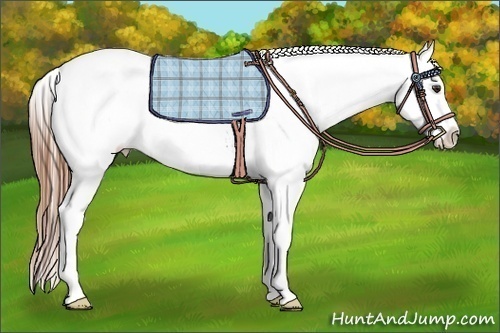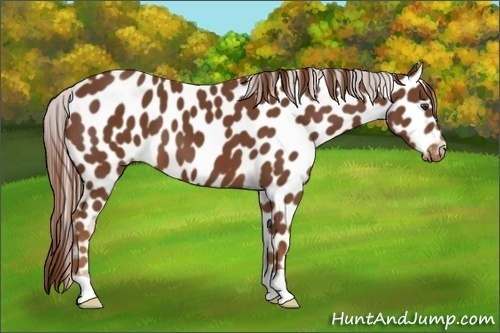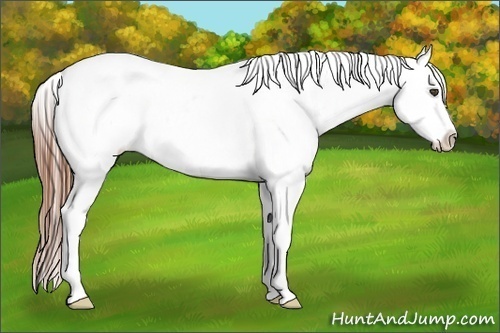X
HGG Community Forums
Log In to HorseGeneticsGame
HGG Community Forums
Join our discord server!
Howdy, Stranger!
It looks like you're new here. If you want to get involved, click one of these buttons!
Categories
- All Discussions68,241
- Announcements356
- HJ2 Discussion67,060
- ↳ New Member Introductions569
- ↳ Help me out3,469
- ↳ Horses For Sale and Auction12,515
- ↳ Breeding Ads and Sales3,456
- ↳ Herd Helper39,570
- ↳ Bug Discussion120
- ↳ Repair Log12
- General Discussion825
- ↳ Saddle Sisterhood32
- ↳ Games, Contests and GiveAWays54
- ↳ Genetics245
In this Discussion
- AmmitTesting3 October 2016
- Cheers October 2016
- ColorGoodStables October 2016
- Denalidom October 2016
- RipshinCreekFarm October 2016
Who's Online (0)
Specifics on leopards
-
I have a few Leopard appaloosas and would like to know a bit more. I'll try to include examples
To me a Leopard is a horse who has no solid\connecting color patches, unless it is large smooth spots. Horses with solid color on their legs and\or face isn't a "real" leopard. I'd like some clarification on this though.
Are horses with solid bits on a regularly Leopard pattern called a few spot? Or am I thinking of something else?
This guy has some solid color on his front leg but is mostly leopard
His grand sire just has big spots
Does this filly have extensive blanket or is solid color on the legs normal for a leo?
And what is this color called?
She is LlpLlp and patn1patn1
I'm probably just putting to much thought into it----
Barn ID 4953 -
I am thinking the bottom mare would be a few spot. I could be wrong, I haven't had my coffee yet so my brain is fuzzy. She should produce an Appaloosa everytime. I think.
-
So the way I think about the leopard complex is that every horse technically has a "blanket," and that patterning genes control the size.
I was reading about some recent findings in coat color mutation (there's a really cool blog called The Equine Tapestry, not sure if I can link it here), and it's thought that leopard spotting is actually one of the earliest color mutations. If I recall correctly, it affected the way dun (wild type for horses) by causing progressive loss of pigment. This may explain appaloosa color shifting (the weird color base coats sometimes turn on appys - ex: sometimes black based horses appear a metallic brownish copper) as well as varnish (progressive roaning, independent from the classic roan Rn-). It is recognized as one of the most ancient variations in color, and is depicted in Old World art. Again, super cool.
The dun dilution is related to the distribution of pigment within a hair, rather than the color of the pigment. In the recently published paper dun was described as "microspotting" within the hair follicle. This could be related to larger scale spotting found in later mutations - including leopard! So to try and tie all that together - leopard is a very old mutation of the wild-type. Dun dilution is caused by distribution of pigment within a hair, which very well may be a "micro" predecessor or large scale spotting patterns. Appaloosas have a couple of intriguing traits, such as shifts/dilutions in base coat color and progressive roaning.
So back to pattern distribution! Think of white areas as parts of the horse that color never reaches during development, rather than "lying over" the base coat. One copy of leopard (Llp L) causes an incomplete restriction of pigment, which produces the spots we're familiar with. Two copies (Llp Llp) completely limits pigment within the pattered area - these are the solid "snowcapped" blankets and few spots.
Patn is silent without leopard to work on (If you're curious, look of Reminic N Spots - he's actually a Quarter Horse whose sire carried Patn silently. When bred to a mare carrying leopard, who had been misidentified as classic roan, they produced a loud spotted foal). The actual distribution of white on a particular horse depends on conditions in utero, which is why clones' white markings don't match. This is true for placental mammals in general. Because of that - and some other factors we may or may not know about - the degree of expression (size and positioning of the pattern) varies between individuals. What is certain is that a horse without Patn has a minimal appaloosa pattern, a horse with one copy (Patn patn) has an obvious blanket, and a horse with two copies (Patn Patn) has a really big blanket. This really big blanket may cover the whole horse, or it may leave parts of the head, chest, and/or legs solid.
Hope that helps! It was always a little fuzzy for me until I really tried to understand how the genes worked. Can't promise it's 100% correct, but these are conclusions drawn on the research that's been done to date.
I kind of love appaloosas.
Interesting tangent: In fact, sooty may be described as "primitive marking without dilution," and if you look at dun (and panagre - think Pzerwalski's horse) as the primitive form then sooty is a variation of wild-type countershading. -
Denali that was an awesome explanation. Thank you!
Color--I would call both of your stallions leopards. One has large spots and the other has micro spots/dots. Apparently spot size has a hidden genetic relationship, so you could potentially breed exclusively micro or large spotted appies in the game.
I would call your filly a "near leopard".
I would also call your bottom mare a "few spot". I also own Appys with just Appy bronzing or a tiny snowcap, which I find equally intriguing to the full loud leopard.... -
Yep, near leopard is the term for almost a full leopard but not quite.
-
Some of the best explanations I've seen! I'll have to look at that Web page on duns @denali I absolutely love seening how sooty make a regular horse dark and how varnish turns my appaloosas white.
I think all appaloosas are gorgeous and I like to keep a variety of them in my barn. Most of my drafts that have appaloosa are very small Leopard snowcapped and most of my warmbloods are extensive blankets. I find it funny that my massive drafts have teeny patterns and my little warmbloods have massive patterns.
I want to work on a Leo line eventually and am just playing with patterns and crosses right now. This all helped a lot----
Barn ID 4953















